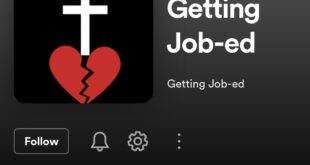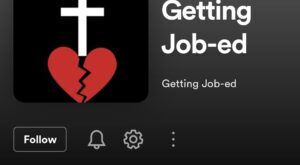Your lamb shall be without blemish, a male a year old. You may take it from the sheep or from the goats, and you shall keep it until the fourteenth day of this month, when the whole assembly of the congregation of Israel shall kill their lambs at twilight… Then Moses called all the elders of Israel and said to them, “Go and select lambs for yourselves according to your clans, and kill the Passover lamb. Take a bunch of hyssop and dip it in the blood that is in the basin, and touch the lintel and the two doorposts with the blood that is in the basin. None of you shall go out of the door of his house until the morning. For the LORD will pass through to strike the Egyptians, and when he sees the blood on the lintel and on the two doorposts, the LORD will pass over the door and will not allow the destroyer to enter your houses to strike you. Exodus 12:5-6; 12:21-23 ESV
Not many people associate Passover with Christmas- this is typically recognized in the days leading up to Easter, as this would have been the historical date. But theologically, Christmas and Passover go hand in hand.
The Lamb of God…
John the Baptist stated, “Behold, the Lamb of God, who takes away the sin of the world!” (John 1:29). Where would John have gotten that thinking? His theology is deeply rooted in the Old Testament. Isaiah 53 discusses this Suffering Servant who will come to mankind to reconcile them with God but will be “like a lamb that is led to the slaughter” (Isaiah 53:10).
This is most fully seen in the context of Passover. In Exodus 12, Egypt’s refusal to repent from their sins had caused God’s judgment to culminate in the death of every firstborn in Egypt. God then tells Moses that in order for the Israelites to escape this judgment, a lamb must be slaughtered and the blood is painted on the doorpost in order for the wrath of God to “pass over” that household. Remember, death was the cost of mankind’s rebellion in Genesis 3. This is a key theological concept you have to grasp: death is the cost of rebellion against a holy God. So, to escape the wrath of God that was coming on Egypt, God’s people would have to slaughter a lamb in order for His wrath to “pass over” them.
The Connection Grows Deeper
In the Passover meal that was observed on the night before Jesus’ death, there was a missing component of the meal in both Matthew 26:26-30 and Luke 22:14-20: The lamb. This was the central aspect of the Passover meal and it’s missing when Jesus observed on the night of His betrayal leading to His crucifixion! Coincidence? Did they just forget the lamb at the market on the way to Passover? No- it was purposeful. Jesus was the Lamb.
In Exodus 12:46, the Passover Lamb’s bones were not to be broken. This would have been peculiar because they were to consume the lamb’s flesh that night, so why does it matter if its bones were broken or not? What is interesting is this:
Since it was the day of Preparation, and so that the bodies would not remain on the cross on the Sabbath (for that Sabbath was a high day), the Jews asked Pilate that their legs might be broken and that they might be taken away. So the soldiers came and broke the legs of the first, and of the other who had been crucified with him. But when they came to Jesus and saw that he was already dead, they did not break his legs. But one of the soldiers pierced his side with a spear, and at once there came out blood and water. John 19:31-34 ESV
Little did the Israelites know that not breaking the lamb’s bones in the Passover meal was pointing to a greater Reality.
Jesus, the Victorious Lamb
We don’t often think of lambs as being victorious. There’s a bit of irony in this depiction, but irony is throughout the entire bible.
Then I saw in the right hand of him who was seated on the throne a scroll written within and on the back, sealed with seven seals. And I saw a mighty angel proclaiming with a loud voice, “Who is worthy to open the scroll and break its seals?” And no one in heaven or on earth or under the earth was able to open the scroll or to look into it, and I began to weep loudly because no one was found worthy to open the scroll or to look into it. And one of the elders said to me, “Weep no more; behold, the Lion of the tribe of Judah, the Root of David, has conquered, so that he can open the scroll and its seven seals.” And between the throne and the four living creatures and among the elders I saw a Lamb standing, as though it had been slain… And when he had taken the scroll, the four living creatures and the twenty-four elders fell down before the Lamb, each holding a harp, and golden bowls full of incense, which are the prayers of the saints. And they sang a new song, saying, “Worthy are you to take the scroll and to open its seals, for you were slain, and by your blood you ransomed people for God from every tribe and language and people and nation, and you have made them a kingdom and priests to our God, and they shall reign on the earth.” Revelation 5:1-6, 8-10 ESV
Through apparent defeat came the greatest victory of all: the ransom of a people for God. This is what the Passover was pointing to: a Savior that was coming to ransom a people for Himself. This Man would appease the wrath of God against sinners and create peace in the relationship between mankind and God. Passover and Christmas are beautifully linked in this way.
-Austin
 Getting Job-ed
Getting Job-ed

